How your shoppers discover your products online is about search, behavioral data, and how you leverage product intelligence.
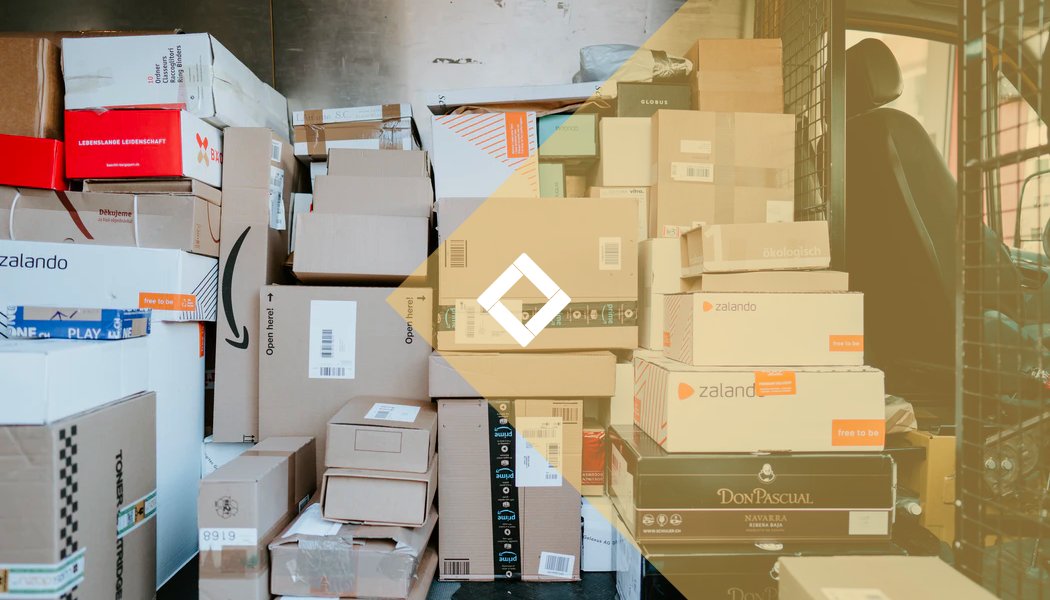
How your shoppers discover your products online is about search, behavioral data, and how you leverage product intelligence.
There are more online shoppers than ever before. In fact, there was a 4.4% year-over-year increase from 2014 to 2021. Another stat for you:
Today, people buy all kinds of products online, from food to utilitarian products (e.g., garden utensils) to hedonic products (e.g., beauty, apparel, etc.).
Which means, as an eCommerce store, it doesn’t matter what you’re selling: Your goal is to make your products stand out.
We’ve seen what happens if you don’t: Soaring bounce rates, choice overload, decreased conversions, stunted revenue, and - most critically - less customer satisfaction. I’m here to tell you that the path to your differentiation starts by elevating the customer experience (CX).
So how do you do it?
Online shoppers today expect to have a similar in-store experience on your webshop, but better. They want:
With this in mind, I’m going to show you an absolute way that addresses all of these steps once and for all. Here’s your absolute ultimate go-to guide to eCommerce product discovery.
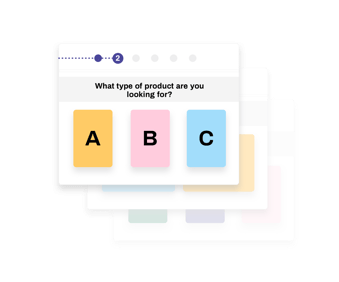
eCommerce product discovery is how your users, visitors, and potential customers find and explore your products on-site.
Syte suggests that product discovery is about getting the shopper to the right product at the right time.
And Zoovu supports this, saying it’s all about the search and discovery of a product. The best webshops find the right products based on the customer’s search behavior.
Both definitions are spot-on but still lack one very important clause. While it’s important to link search queries with results, eCommerce product discovery is so much more than simply improving product findability.
It’s also about:
“Discovering the entirety of the product based on its analytics, other similar products, attributes and benefits, and tailoring product messages to promote products to individual shoppers.”
An approach that takes an optimized and intelligent look at product discovery is the future of eCommerce. You could call this approach Product Intelligence.
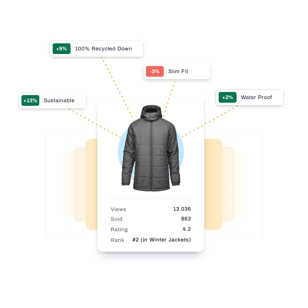
Before getting straight into examples of product discovery on-site, let me explain product intelligence. This is so important because it takes the idea of product discovery to the next level.
Every product has different attributes and behavioral characteristics. And every person has different reasons to buy one product over another.
Product intelligence is about understanding what your customers look for and like about your products. It can be used to learn what motivates your customers to purchase the products they do. These insights into your products and the customers behind them are actionable and can be applied omnichannel.
Plus, product intelligence leverages product data instead of consumer personal information to keep the customer’s data secure, elevating your brand as data-conscious.
If you really want to get ahead of the curve with your product discovery, product intelligence is the way to go.
To put it simply, product intelligence for eCommerce discovery is about:
I can’t stress the value of product intelligence enough. But that’s for another post. You’re here to find out how to improve your product discovery, from your homepage to checkout.
62% of eCommerce journeys start with a search engine. But 38% of journeys start with you, the retailer. While some of your customers are goal-oriented, many will land on your homepage to begin their product discovery.
Here, your shoppers are at the awareness phase, meaning your homepage needs to pique interest to drive them towards the consideration phase.
Here are some examples of how you can create a search and discovery hook that is both fluent and appealing on the homepage.

Note: IKEA’s deal finder in NL, self-translated to English.
A product finder is a guided selling tool that recreates your in-store assistant or sales clerk online. It’s basically a quiz-wizard that asks your shoppers questions to identify their needs and wants. Based on the shopper’s answers, you recommend the perfect product.
For example, IKEA has a “Deal Finder” on their webshop homepage. This helps narrow down the search for discounts or sale items.
Simple, right? Not to mention effective.
Based on how the user answers the questions, IKEA can also optimize their products (including on-site search) based on this behavioral data.
Product finders are a great way to elevate your product discovery by:
See how we did this for ASICS!
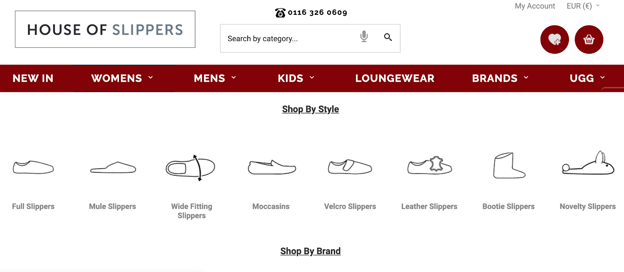
Your product taxonomy may just be the first thing customers will use on your webshop to discover your products and product ranges.
While there is no industry standard for creating product taxonomies in eCommerce, there are still some best practices to keep in mind:

For example, House of Slippers uses images to make their taxonomies more visual. They organize their categories by demographic → slipper style.
Burberry, on the other hand, has a category just for their Trench Coat. As this is their brand-defining product, they streamline its discovery with two sub-categories:
House of Slippers and Burberry are two very different brands with pretty unique product offerings. Yet, both make their taxonomies work for them.
Apply this yourself by,
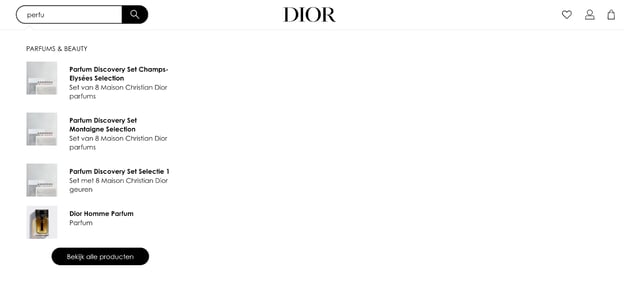
eCommerce webshops have started leveraging Google’s “Autocomplete” feature to facilitate product discovery based on a search query.
Fancy jumping aboard?
When machine learning algorithms predict a list of results based on the query, this becomes Predictive Search; A really important tool to elevate your eCommerce product discovery.
Predictive search basically autocompletes results based on your product database or, sometimes, on your user’s history. Predictive search is a go-to for eCommerce discovery because it nudges people to the product detail page (PDP) and streamlines their journey.
And if that wasn’t enough, implementing Predictive Search will:
You could also have a featured image to really elevate your product discovery experience straight from the search bar (see Dior example above).
Congrats! Your shoppers enjoyed your homepage enough to click on a product category. Phew, time to wipe that sweat off your brow. Of course, they could have also landed from an external query (e.g., social media, Google ads) so you still have some work to do.
But don’t worry, I’ve got some stellar examples for you to learn from.
You see, at this stage in the customer journey, you want to improve the discoverability of specific products. The goal is to turn browsers into buyers, by driving click-behavior from the PLP to PDP (or direct add-to-cart!).
According to Baymard Institute, even a slightly optimized PLP can improve abandoned carts by 33%.
So where do you start?

Product badging is the use of labels on a product image to highlight something that’s special about the product. The label will either show information, like a product’s attributes and benefits or have a behavioral principle nudge to trigger shopper click-behavior.
For example, on ASICS’ PLP:
Whatever message you choose to display, it should be truthful, honest, and consistent. Miss this and you’ll have yourselves a Dark Pattern - a big no-no for your conversions and brand perception.
Instead, use product badges to:
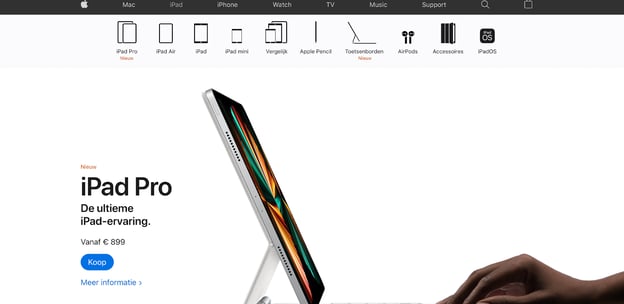
Another way to facilitate product discovery on your PLP is to improve your filtering. Filtering leverages product tags to create a list of products that are uniquely tailored to the shopper.
Baymard Institute found that 38% of webshops don’t use filters. Their study also concluded that filters greatly help to decrease bounce and cart abandonment. Which makes sense, because filtering literally narrows down results based on the customer’s preferences, interests, and needs.
Webshops usually filter by product attributes (color, size, shape, etc). This also helps the retailer learn what their customers like about their products through their filtering behavior.
For example, if more people are filtering on both iPad and Airpods, then Apple knows these are products often bought together. To be more data-driven, improved filtering will help you communicate with your shoppers based on their behavior -
E.g., If a Google user filters on “Men”, “Size 42”, “Grey”, then send this customer a relevant email with similar products or complete the outfit recommendations.
Improved filtering can take your product discovery omnichannel, while still using in-session product data.

Smart merchandising leverages AI to organize relevant products in the best way on your PLP. Glossier does this by putting their products into context based on who’s viewing them.
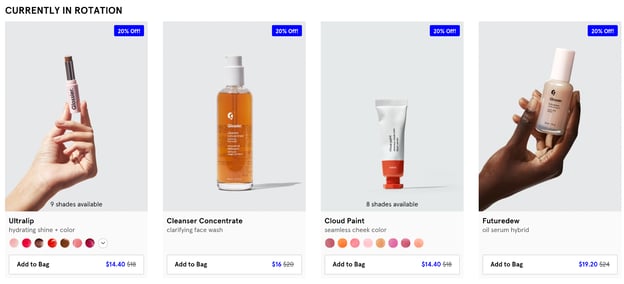
Smart merchandising is customer-centric because you’re personalizing the PLP based on the individual and how they’ve previously browsed your eCommerce store.
It elevates your product discovery, realigning the PLP experience with your shopper’s goals. It also sorts the products shoppers see based on their user context.
To buy or not to buy? Shoppers visiting the PDP are information-driven. They’re at the stage of their decision-making where they’re looking for reasons whether to buy the product or get the h*ll out of there.
Ok, so maybe not to that extreme - but your PDP is still one of the most important parts of the product discovery journey. At this point on your webshop, it’s up to you to:
It sounds like you have your work cut out for you. But with these two final product discovery suggestions, it’ll be easy to take your PLP to the next level.

If you give your shoppers the option to compare products, you’re providing them with information that will give weight to their final decision.
It’s why price comparison (like anchoring) hasis such a strong psychological effect. Giving your shoppers the ability to compare products makes their journeys more autonomous, another important UX principle that drives behavior.
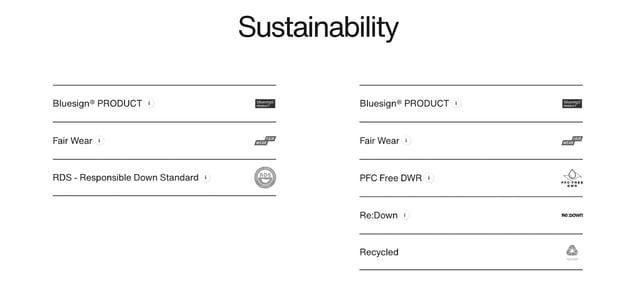
Mammut has a great tool that lets you visually compare two products. Scroll down the page and they also compare different product attributes and their sustainability factors.
This is a great example of elevated product discovery because:
Something that’s missing in Mammut’s product comparison, however, are direct CTA’s. You want to have options like add-to-cart, clicking directly out of the comparison table, or even the option to share the product comparison on social media or email.
In short, the more interactive, informative, and fluent your product comparison, the better and more conversion-driven your product discovery will be.
It’s a win-win for the customer, for you, and, hey, for your products too! A product comparison tool puts your products on a pedestal.
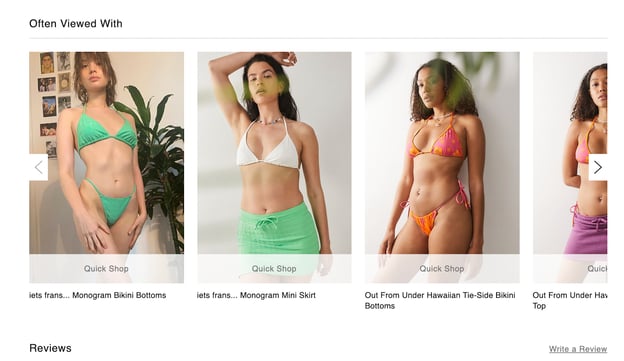
You can personalize your product recommendations on the PLP based on the product and category (e.g., contextual data). For example, several ways to recommend productsThis looks like this:
ThisWhich elevates your product discovery in a similar way to product comparison. Of course, you could also show what products the customer has recently viewed (based on browsing history) or simple recommendations (based on purchase history).
But this secondary approach lacks the product intelligence angle. The best way to make smart product recommendations is to make them dynamic (adapting in real-time) and personalized (catering to individual customers)
Do this, and you can really bring the in-store assistant online, with product recommendations that:
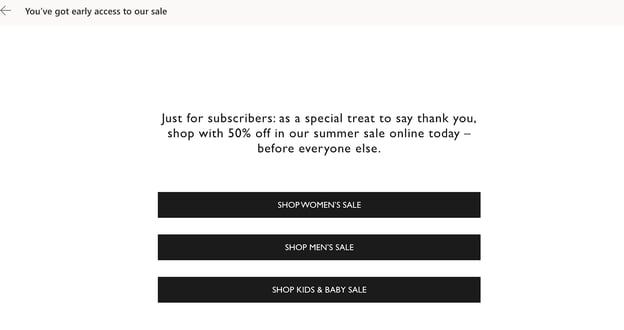
Now that we’ve reached the cart and checkout phase of the funnel, you’re probably wondering where your examples have gone too.
I’ve left these two phases out on purpose. The thing is, by the time your customers are on the cart or checkout page, your product discovery and search have kind of succeeded.
Of course, there are many things you can do post-PLP to elevate your product discovery, such as:
Beyond your eCommerce funnel, you should continue to elevate your product discovery by creating stories around the products your customers do end up buying.
This means nurturing the customer relationship through other channels, and giving positive, lasting impressions about your brand.
According to Gartner, every tip I’ve given you throughout this article can be thrown out the window by 2030.
Just kidding.
But Gartner does say that in the future, eCommerce product discovery will evolve to something that looks like this:
Remember the product intelligence we were talking about earlier? Omnichannel product discovery will carve out your competitive advantage.
But in the present, it’s enough to make your product discovery an interactive and iterative process. Tracking and analyzing how your customers discover your products will continue to improve their overall customer experience.
Start now to get ahead of the curve.